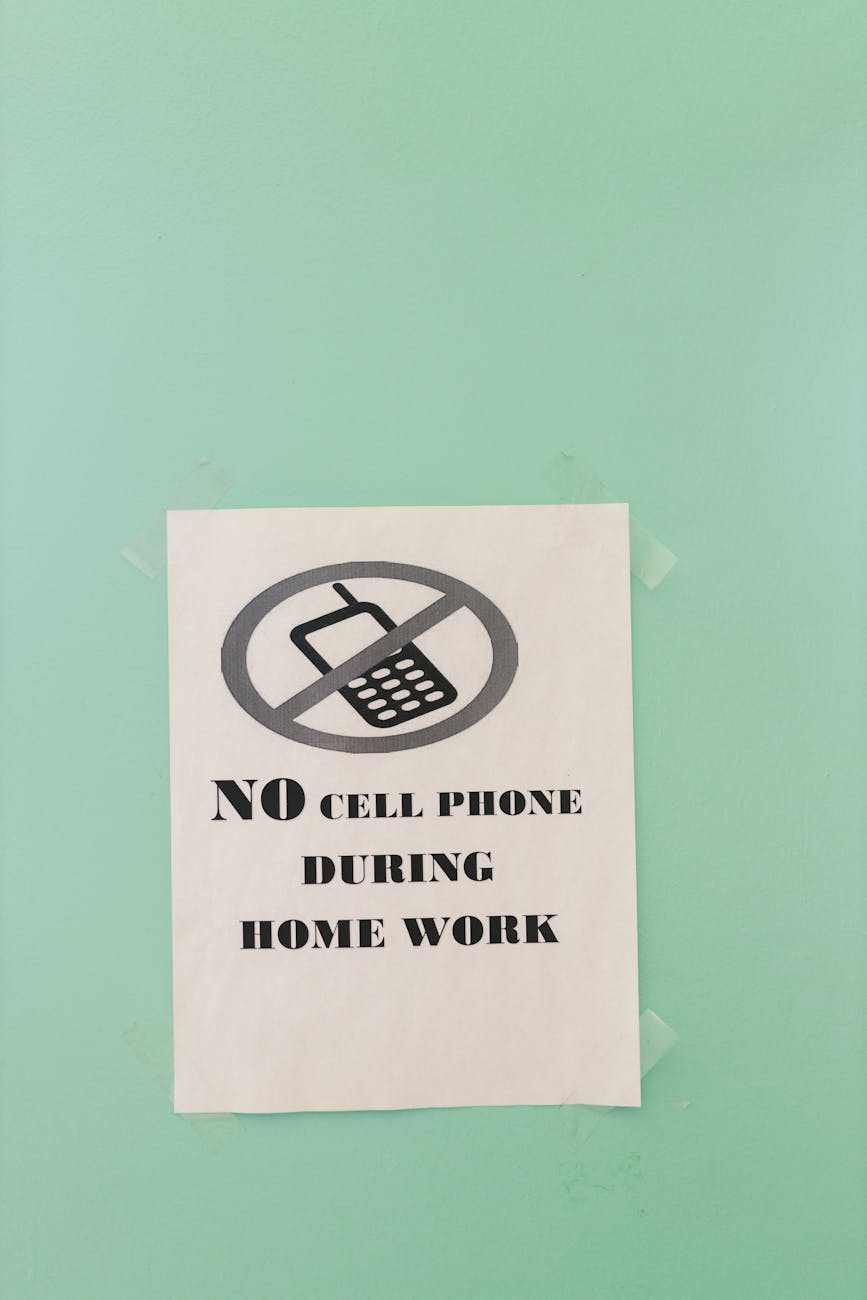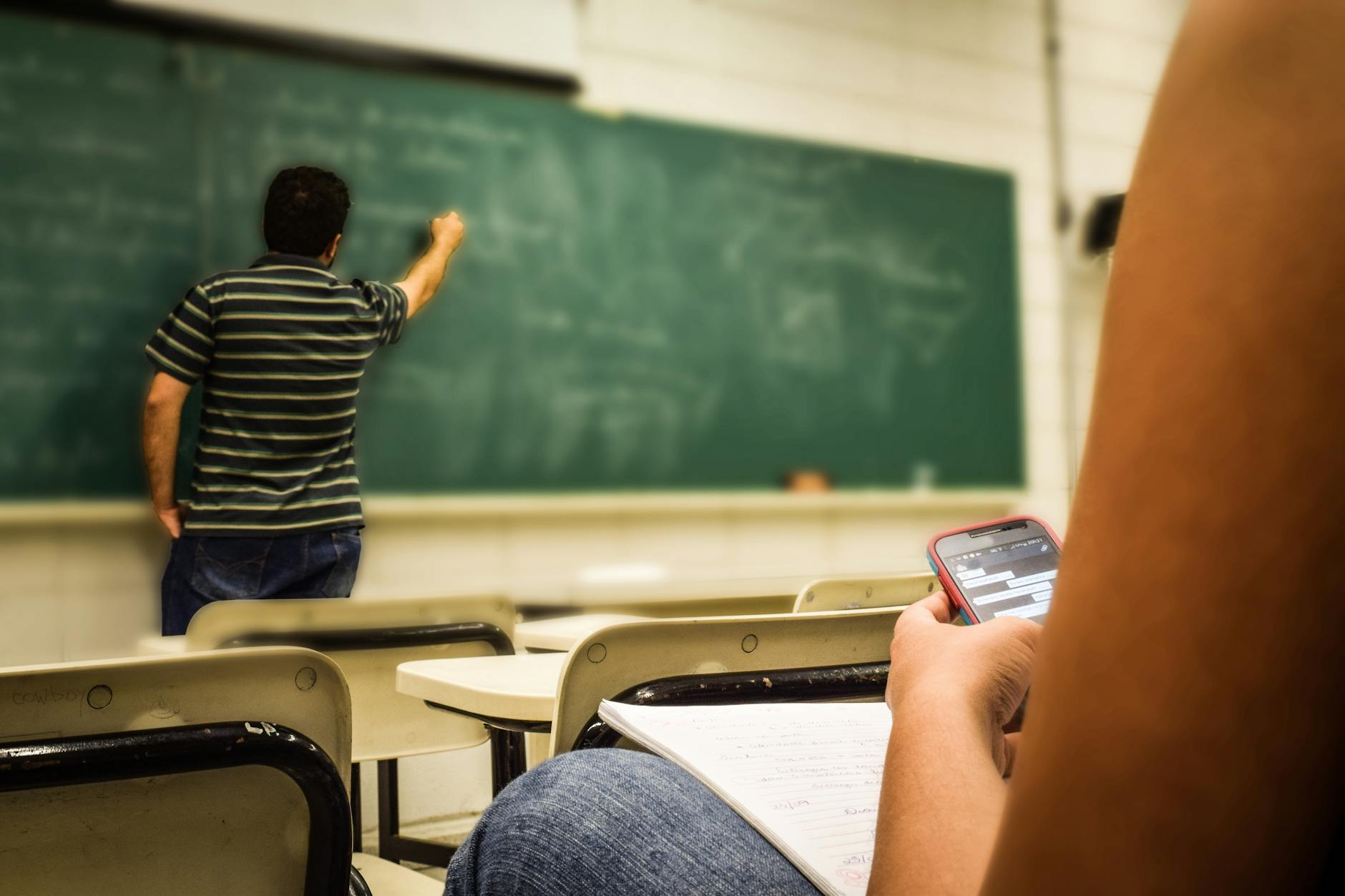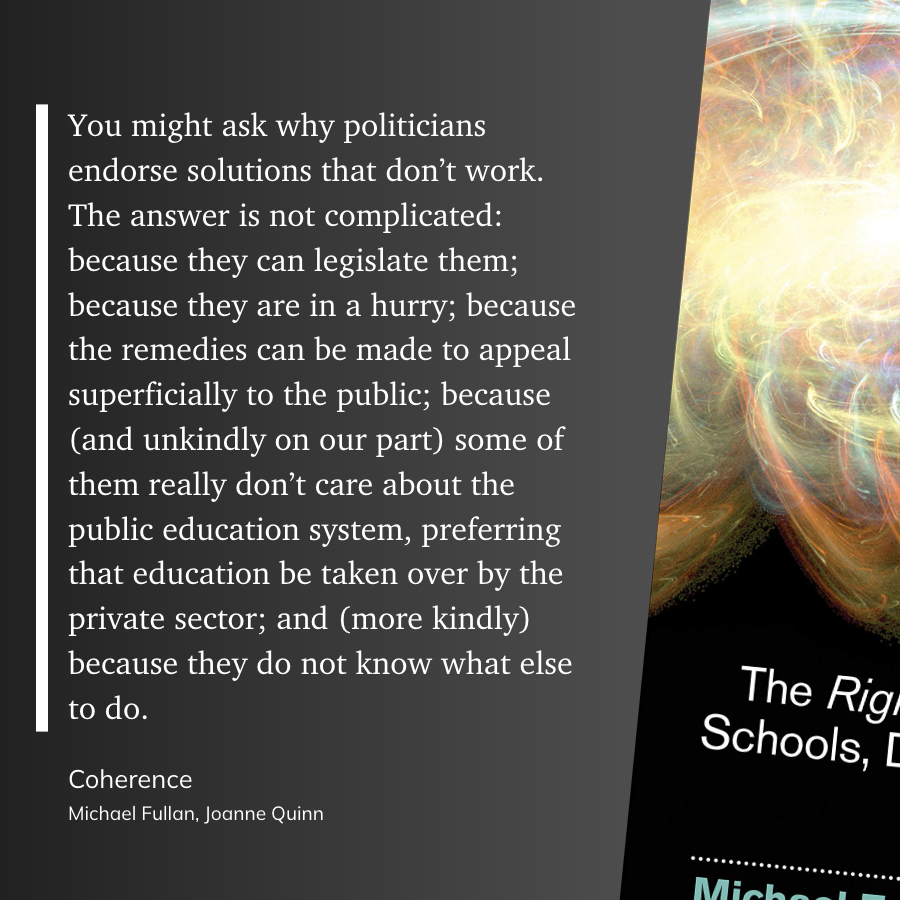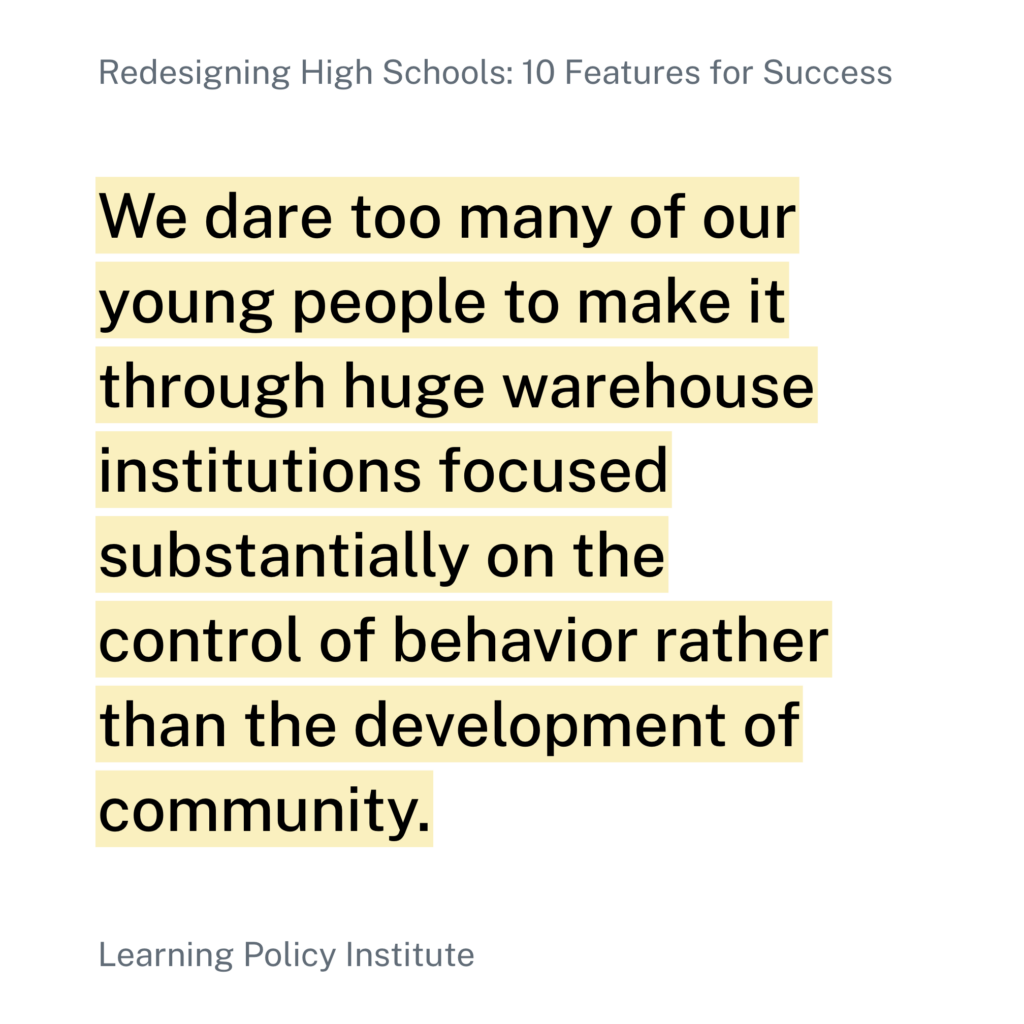- Adobe to automatically move subscribers to pricier, AI-focused tier in June
- Secretary of Homeland Security Kristi Noem has no clue what ‘habeas corpus’ is and has the worst possible take on what it might be
- Instead of Banning Cellphones in School, Our Connecticut District Embraced Them
- The meritocracy to eugenics pipeline
Tag: education policy
Hochul’s Cellphone Ban: More Control, Less Freedom

New York Gov. Kathy Hochul wants a statewide, bell-to-bell cellphone ban in schools, dictating how every district, student, and teacher handles devices. But the New York Senate is pushing back, demanding flexibility for schools and ensuring students won’t be suspended over cellphone violations.
The governor claims she’s doing what “parents and teachers want.” But let’s be honest: this isn’t about education but control. Schools already have policies. Local educators, not politicians, should decide what works best for their students.
Let’s break it down:
📵 Banning cellphones won’t fix student disengagement. The real problems—underfunded schools, high-stakes testing, economic stress, and a lack of mental health support—remain untouched.
📵 A one-size-fits-all ban ignores real student needs. Many students use phones for accessibility tools, translations, medical needs, family contact, and learning resources.
📵 Enforcement will fall on teachers and create unnecessary conflict. Instead of teaching, they’ll be the “phone police.”
Yes, social media addiction is a real issue. But banning tech won’t solve systemic failures in education. If Hochul cared about student well-being, she’d invest in smaller class sizes, more counselors, and policies that treat kids like humans, not distractions.
Good on the NY Senate for fighting back. Educators and communities should make school decisions—not politicians looking for a quick-fix headline.
The Eclectic Educator is a free resource for everyone passionate about education and creativity. If you enjoy the content and want to support the newsletter, consider becoming a paid subscriber. Your support helps keep the insights and inspiration coming!
Theocracy in Public Schools: Arizona GOP Pushes Religious Chaplains Over Trained Counselors

Arizona Republicans are at it again—dismantling public education and replacing it with religious indoctrination. Their latest stunt? SB 1269 allows untrained religious chaplains to provide mental health counseling to students instead of licensed professionals.
Rep. David Marshall says “Jesus is better than a psychologist,” as if prayer is an adequate substitute for professional mental health care. Meanwhile, Sen. Wendy Rogers, a known far-right extremist with ties to white nationalism, is leading the charge to erase the separation of church and state entirely—because, in her words, “that’s a myth.”
Let’s be clear: this bill isn’t about helping students. It’s about using public schools to funnel state-sanctioned religious propaganda to kids. Republicans claim there’s a “spiritual deficit” causing student mental health struggles—not economic inequality, not school shootings, not climate anxiety, not lack of access to healthcare, but a lack of religion.
This bill:
⚠️ Violates the First Amendment by forcing religious figures into public schools.
⚠️ Endangers students by replacing licensed counselors with untrained chaplains.
⚠️ Opens the door for Christian Nationalism while silencing minority faiths (or, let’s be honest, outright banning non-Christian chaplains).
Meanwhile, Democrats have been fighting for more school counselors, psychologists, and social workers—REAL solutions to the youth mental health crisis. But the GOP would rather ignore science, shove their religion down kids’ throats, and strip public education for parts.
Public schools should be secular, mental health support should be evidence-based, and the government should NOT be a pulpit.
The Eclectic Educator is a free resource for everyone passionate about education and creativity. If you enjoy the content and want to support the newsletter, consider becoming a paid subscriber. Your support helps keep the insights and inspiration coming!
Mental Health, Teacher Pay, and School Choice: What’s Missing in Governors’ Education Plans?
Across the country, governors have laid out ambitious education plans for 2025—but have they missed the mark on boosting student achievement? While state leaders from both parties broadly agree on increasing education funding, supporting student well-being, and enhancing career pathways, few have directly addressed declining academic performance. FutureEd’s analysis reveals significant bipartisan commitments, including strengthening teacher pay and addressing youth mental health, yet highlights stark ideological divides over school choice and the role of diversity initiatives in education.
With federal pandemic-relief funds drying up, previously celebrated interventions like tutoring and enrichment programs are fading into the background. As governors debate whether school choice initiatives or stricter academic standards will drive student improvement, educators wonder: Are we missing an opportunity to place learning at the heart of education policy?
Education Under Attack? Why the ‘Unitary Executive’ Fight Matters for Schools
Unitary executive theory might sound like dry political jargon, but it’s at the heart of debates reshaping how the American government—and potentially education policy—functions. Despite some sensational headlines, the theory doesn’t aim to eliminate the three-branch structure of government; rather, it emphasizes the president’s control over the executive branch, specifically around the ability to remove officials. But why should educators and policymakers care?
Education policy, like other areas managed by specialized agencies, often depends on a certain degree of political independence to ensure expertise rather than short-term politics drive decisions. Agencies like the Institute for Education Sciences (IES) and the National Assessment Governing Board (NAGB) are designed precisely with this independence, with leadership terms deliberately spanning multiple presidential administrations.
However, under the Trump administration, these agencies face new challenges as unitary executive theory pushes the boundaries of presidential power. Recent moves by the administration, including contract cancellations and the politically motivated dismissal of key appointees, suggest a test of how far executive authority can stretch.
Why does this matter for education? If the independence of agencies like IES and NAGB is compromised, education policy could increasingly become a political football, undermining long-term, evidence-based educational improvement. For educators and policymakers alike, understanding this debate isn’t just about constitutional theory—it’s about safeguarding the stability and integrity of our educational institutions.
What Happens if Google Loses Chrome?
You may not know it, but Google has been part of an ongoing DOJ antitrust case.
According to the most recent filings, Google may be forced to fully divest itself of the Chrome web browser.
Imagine waking up to a web without Chrome. With Google potentially losing control of the world’s most popular browser—used daily by 3.4 billion people—the ripple effects could be profound, especially in education.
Schools relying heavily on Chromebooks could face immediate disruption.
This shift could usher in a new era of innovation. Education-focused browsers or open-source platforms might emerge, enhancing student privacy, accessibility, and user experience. Educators could rethink their technology strategies, potentially adopting more flexible and privacy-centric tools like Mozilla Firefox or exploring open platforms like Brave.
Change at this scale is rarely comfortable, but it often accelerates growth. The key question isn’t whether schools can handle the disruption—it’s how creatively and effectively they adapt.
Will AI Transform Teaching and Learning?

Larry Cuban has some great thoughts–as always–on the potential of AI to change education.
Yet there is little evidence that classroom use of these previous technologies forced classroom teachers to rethink, much less reshape, instruction. Nor have I found convincing evidence that these technologies altered fundamentally how teachers teach, increased student engagement, or raised test scores.
So I have concluded that those pushing AI use in classrooms fail to understand the complexity of teaching.
Yes, there have been any number of technological revolutions meant to forever change the landscape of teaching and learning. Most of these revolutions have fallen by the wayside or have never seen their true potential realized. I’m looking at you, 1:1 computing initiatives.
I’m of the mind that the failures of these technologies to revolutionize teaching and learning don’t fall on the technologies. They are, after all, just tools with no consciousness, no agenda, and no determination of how best to use them.
That part is up to us, the human implementors of said tools. When we can’t figure out how to leverage tools properly or, as is far more often the case, refuse to implement the tools, failure is assured.
Far too often, I hear the argument from some teachers that, “What I’m doing works, and I don’t need to learn anything new,” or the ever-so-sinister, “I only do my learning in the summer and don’t have time for this.”
Perhaps most damnable is this statement: “Technology has never been shown to increase test scores, so we don’t need to use it.”
Because all we’re worried about is test scores. And that’s the real problem.
The Eclectic Educator is a free resource for everyone passionate about education and creativity. If you enjoy the content and want to support the newsletter, consider becoming a paid subscriber. Your support helps keep the insights and inspiration coming!
Endorsing Solutions that Don’t Work
This hot take isn’t so hot and perfectly describes why public education will always have to deal with standardized testing mandates and measures from the government.
“You might ask why politicians endorse solutions that don’t work. The answer is not complicated: because they can legislate them; because they are in a hurry; because the remedies can be made to appeal superficially to the public; because (and unkindly on our part) some of them really don’t care about the public education system, preferring that education be taken over by the private sector; and (more kindly) because they do not know what else to do.” (Michael Fullan, Joanne Quinn, Coherence)

- Fullan, Michael (Author)
- English (Publication Language)
- 168 Pages – 08/24/2015 (Publication Date) – Corwin (Publisher)
The Eclectic Educator is a free resource for everyone passionate about education and creativity. If you enjoy the content and want to support the newsletter, consider becoming a paid subscriber. Your support helps keep the insights and inspiration coming!
No More Warehouse Institutions

When will we finally stop sending our kids to huge buildings managed by bureaucracies that are more concerned with making sure everyone changes class on time than they are with making sure that everyone is prepared to participate in our society?
From Redesigning High Schools: 10 Features for Success
The Eclectic Educator is a free resource for everyone passionate about education and creativity. If you enjoy the content and want to support the newsletter, consider becoming a paid subscriber. Your support helps keep the insights and inspiration coming!
Are you cheating if you use AI? Workforce leaders may not think so

The debate about AI usage in schools rages as some educators want to block all AI access, and some want to embrace the new technology and leverage it for learning.
A core tension has emerged: Many teachers want to keep AI out of our classrooms, but also know that future workplaces may demand AI literacy.
What we call cheating, business could see as efficiency and progress.
A new book, Teaching with AI: A Practical Guide to a New Era of Human Learning, aims to help teachers discover how to harness and manage AI as a powerful teaching tool.
AI is a fabulous tool for getting started or unstuck. AI puts together old ideas in new ways and can do this at scale: It will make creativity easier for everyone.
- C. Edward Watson (Author)
- English (Publication Language)
- 280 Pages – 04/30/2024 (Publication Date) – Johns Hopkins University Press (Publisher)
Where are you on the AI in schools debate? Fan or foe?
The Eclectic Educator is a free resource for everyone passionate about education and creativity. If you enjoy the content and want to support the newsletter, consider becoming a paid subscriber. Your support helps keep the insights and inspiration coming!

